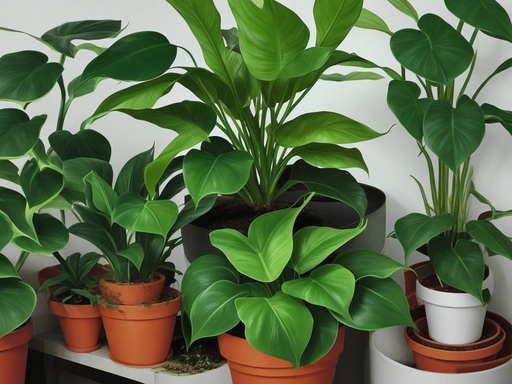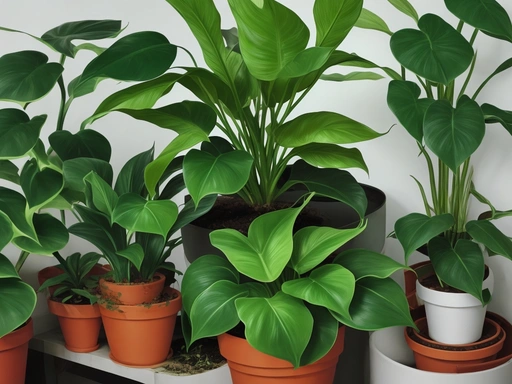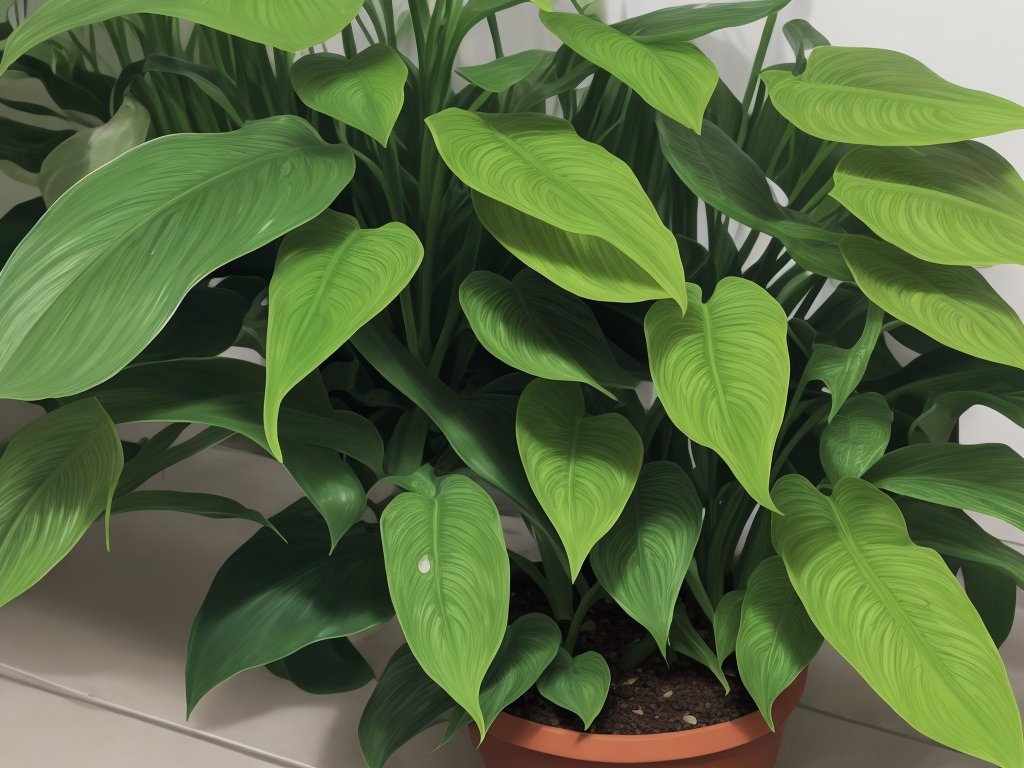Philodendron Aerial Roots – Explained!
Key Takeaways:
- Philodendron aerial roots are specialized structures that help the plant to anchor itself and absorb moisture from the air.
- These roots play a crucial role in the overall health and growth of the plant, providing additional support and nutrients.
- Proper care and maintenance, including humidity and occasional misting, can promote the development and functionality of aerial roots.
- Philodendron plants with healthy aerial roots are more likely to thrive and exhibit vibrant foliage.
Welcome to the fascinating world of Philodendron aerial roots! Have you ever wondered about those curious strands growing from your Philodendron plants?
Well, you’re in for a treat! In this article, we’ll delve into the definition and functionality of these aerial roots, explore the different types you might encounter, and uncover how they develop.
But it doesn’t stop there – we’ll also discuss the benefits, common issues, and essential maintenance tips to keep your Philodendron’s aerial roots healthy and thriving.
So, buckle up and get ready to unravel the mysteries of these amazing plant appendages!
| Topic | Description |
|---|---|
| What are Philodendron aerial roots? | Philodendron aerial roots are specialized roots that grow above the ground or cling to surfaces to provide support and absorb moisture and nutrients. |
| Why do Philodendrons have aerial roots? | Philodendrons have aerial roots to support their vining or climbing growth habit, to anchor themselves to trees or other structures, and to absorb additional moisture and nutrients from the air and surrounding environment. |
| What do Philodendron aerial roots look like? | Philodendron aerial roots are typically thin, long, and wiry, often covered in tiny hairs or rootlets. They can be brown, green, or grayish in color. |
| Do Philodendron aerial roots need special care? | Philodendron aerial roots do not require any special care. They are natural adaptations of the plant and will grow and thrive as long as the Philodendron is provided with appropriate light, water, and nutrients. |
What are Philodendron Aerial Roots?
Philodendron aerial roots are specialized structures that grow from the stems or nodes of the plant, serving various functions such as stability, attachment, and nutrient absorption.
Definition and Functionality of Aerial Roots
Aerial roots are roots that grow from a plant’s stem or branches and grow above the ground. They serve multiple functions for the plant, including nutrient absorption, water storage, and providing stability and support.
They can also be used for propagation and anchoring the plant to a support structure.

Different Types of Philodendron Aerial Roots
Philodendron plants can develop different types of aerial roots. One common type is the prop root, which grows directly from the stem and provides stability and support.
Another type is the epiphytic root, which grows from the stem or leaf node and helps the plant absorb nutrients and water from the air.
How Do Philodendron Aerial Roots Develop?
Philodendron aerial roots develop through a natural growth process specific to these plants.
Natural Growth Process of Aerial Roots
Aerial roots naturally develop from the stems of philodendron plants.
They start as small bumps or nodes on the stem and then grow into long roots that hang down towards the ground.
These roots have a unique ability to absorb moisture and nutrients from the air, allowing the plant to thrive in its natural environment.
The growth of aerial roots is influenced by factors like humidity, light levels, and the plant’s overall health.
Factors That Influence Aerial Root Development
Factors that influence aerial root development in Philodendron plants include:
- Environmental conditions: Adequate humidity, temperature, and light levels are important for the growth of aerial roots. A warm and humid environment promotes their development.
- Water and nutrient availability: Aerial roots require sufficient water and nutrients to grow. Providing regular and balanced irrigation, as well as nutrient-rich soil or fertilizers, can support their development.
- Support structures: Philodendron plants with access to support structures, such as trees or trellises, are more likely to develop aerial roots. These roots help anchor the plant and provide additional stability.
- Genetics: Different Philodendron species may have varying tendencies to develop aerial roots. Some species are more prone to producing them, while others may not exhibit this behavior as prominently.
- Age and health of the plant: Aerial root development tends to occur in mature Philodendron plants that are in good health. Younger or unhealthy plants may not produce as many or as robust aerial roots.
Benefits of Philodendron Aerial Roots
Philodendron aerial roots provide benefits such as nutrient absorption and water storage, as well as enhancing stability and support for the plant.
Nutrient Absorption and Water Storage
Philodendron aerial roots play a vital role in nutrient absorption and water storage.
These roots are equipped with tiny root hairs that absorb nutrients from the air and surrounding environment.
Additionally, the aerial roots can absorb moisture from the air, helping the plant to thrive in humid conditions.
This ability to absorb nutrients and store water allows the plant to survive in a variety of environments.

Enhancing Stability and Support
Philodendron aerial roots enhance the stability and support of the plant by attaching to nearby structures or substrates. These roots help anchor the plant in place, preventing it from tipping over or being easily moved.
They also provide additional support for the weight of the plant as it grows, ensuring that it remains upright and balanced.
Additionally, the aerial roots can help stabilize the plant during windy conditions, reducing the risk of damage or breakage. The strong and versatile nature of these roots makes them an essential feature of philodendron plants, contributing to their overall health and vitality.
Common Issues with Philodendron Aerial Roots
Common issues with Philodendron aerial roots include overgrowth and crowding, as well as potential damage to surrounding structures.
Overgrowth and Crowding of Aerial Roots
Overgrowth and crowding of aerial roots can occur in philodendron plants. This happens when the roots grow excessively and start taking up too much space.
It can lead to a tangled mess of roots, which may disrupt the plant’s growth and potentially damage surrounding structures.
It’s important to regularly prune and trim the aerial roots to prevent overgrowth and maintain a healthy plant. Additionally, using proper potting techniques can help manage the growth of aerial roots.

Potential Damage to Surrounding Structures
The aerial roots of Philodendron plants can potentially cause damage to surrounding structures if left unchecked. These roots can grow and expand, penetrating walls, fences, and other surfaces.
Over time, they can cause cracks, deterioration, and weaken the structural integrity.
Regular pruning and management of aerial roots can help prevent this damage.

Maintenance and Care of Philodendron Aerial Roots
To properly maintain and care for Philodendron aerial roots, pruning and trimming can help manage their growth, while proper potting techniques can also play a role in managing and supporting these roots.
Pruning and Trimming Aerial Roots
To prune and trim aerial roots on your Philodendron, you can simply use a clean pair of scissors or shears.
Gently snip away any overgrown or crowded roots, allowing the plant to maintain a healthier and more balanced appearance.
Avoid cutting too many roots at once to prevent stressing the plant.
Regularly maintaining aerial roots will help keep your Philodendron thriving.
Proper Potting Techniques for Aerial Root Management
When potting your Philodendron, make sure to choose a well-draining potting mix. Gently loosen the root ball before placing it in the pot and backfill with soil.
Avoid burying the aerial roots, but allow them to dangle over the edge of the pot.
Regularly check for excessive growth and consider pruning if necessary. Ensure your plant has a sturdy support structure for the aerial roots to cling to.
Frequently Asked Questions about Philodendron Aerial Roots
Can I propagate Philodendron plants using aerial roots?
Yes, you can propagate Philodendron plants using aerial roots. Simply cut a section of the stem that includes an aerial root, and plant it in a well-draining soil mix.
Make sure to keep the soil moist and in a warm environment to encourage root growth.
How do I prevent overgrowth of aerial roots in my Philodendron plant?
To prevent overgrowth of aerial roots in your Philodendron plant, you can follow these steps:
- Provide adequate support: Ensure your Philodendron has a sturdy structure to climb on, such as a moss pole or trellis. This will limit the need for excessive aerial root growth.
- Regular pruning: Trim any excess aerial roots that have become unruly or overcrowded. Be careful not to remove too many at once, as they serve important functions for the plant.
- Proper watering: Avoid overwatering your Philodendron, as this can promote excessive root growth. Allow the soil to dry out slightly between waterings, and use well-draining soil to prevent waterlogged conditions.
- Manage light levels: Philodendrons thrive in bright, indirect light. Avoid placing them in areas with intense, direct sunlight, as this can lead to increased aerial root growth.
- Pot size: Ensure your Philodendron is in an appropriately sized pot. If the pot is too small, the plant may produce more aerial roots in an attempt to find more space and stability.
Are aerial roots necessary for the health of Philodendron plants?
Yes, aerial roots are necessary for the health of Philodendron plants.
They play a crucial role in nutrient absorption and water storage, ensuring the plant’s overall well-being.
Additionally, aerial roots enhance stability and provide support for the plant, promoting healthy growth.
Can I use aerial roots to anchor my Philodendron plant to a support structure?
Yes, you can use aerial roots to anchor your Philodendron plant to a support structure. Philodendron aerial roots are specifically designed to provide stability and support to the plant.
You can gently guide these roots towards the support structure and allow them to attach themselves naturally.
The roots will then grow and strengthen, providing a secure anchor for your Philodendron. Just be sure not to force or damage the roots in the process.
Final Verdict
Philodendron aerial roots are an important and fascinating part of these tropical plants. They serve multiple functions, from nutrient absorption to providing stability and support.
Understanding the development and benefits of aerial roots can help you better care for your Philodendron plants.
However, it’s important to address potential issues such as overgrowth and damage to surrounding structures. Regular maintenance and proper potting techniques are vital for managing aerial roots.
Overall, respecting and nurturing these unique features will ensure healthy growth and thriving Philodendron plants.







